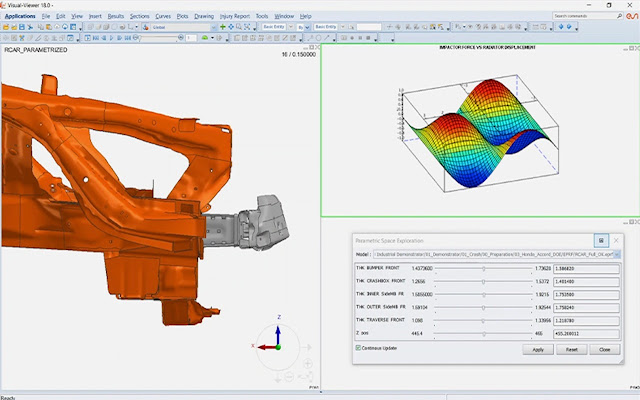Hybrid Twins Offer a Digital Test Track for Evaluating the Safety of Autonomous Vehicles
As autonomous vehicles (AVs) become more prevalent, ensuring their safety is paramount. Traditional crash testing methods are limited, primarily evaluating fixed scenarios like moderate overlap and side crashes. However, they don't account for the vehicle's potential to optimize its angle of impact milliseconds before a collision, a concept known as optimized impact minimization.
Enter Hybrid Twins
Hybrid twin technology combines various emulators into a single, integrated model, allowing engineers to simulate AV performance in a wider range of scenarios, including collision avoidance and impact minimization. This approach enables the evaluation of both hardware and software changes earlier in the design phase, ultimately enhancing safety.
The recent report from the Insurance Institute for Highway Safety (IIHS) highlights concerns over the safety of large SUVs, emphasizing the need for improved testing methodologies. Current methods do not evaluate how a vehicle can react in real-time to minimize damage during unavoidable collisions.
Optimizing Crash Scenarios
Hybrid twins allow for the simulation of various impact angles, enabling designers to assess how slight shifts in impact can take advantage of the vehicle's structural strengths. This technology supports comprehensive analysis throughout the vehicle's lifecycle, from prototyping to real-world performance, ensuring safety specifications are met across a broader range of conditions.
Driving Design Innovation
With hybrid twin technology, manufacturers can implement design changes earlier. For instance, if a vehicle’s radar sensor improves its detection capabilities, these changes can be assessed in the vehicle design phase, rather than post-production. This early evaluation helps identify critical safety and performance issues, significantly reducing the likelihood of costly recalls, which in 2022, affected 10 million vehicles due to software issues alone.
The integration of hybrid twins not only accelerates the vehicle development lifecycle but also contributes to the industry's goal of reducing fatalities and enhancing sustainability. By modeling impacts such as power consumption and emissions, hybrid twins are pivotal in driving the automotive sector toward net-zero emissions.
Conclusion
The transition from traditional testing methods to hybrid twin simulations marks a significant advancement in the auto industry. As vehicles become increasingly complex, hybrid twins provide a digital test track to evaluate the entire driving experience, prioritize safety, and scale AV development effectively.



.png)




.png)

.png)
.png)

0 Comments